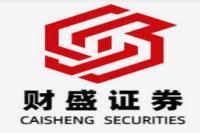RCEP: A Catalyst for Regional Growth and Shared Prosperity
Meta Description: Explore the impact of the Regional Comprehensive Economic Partnership (RCEP) on regional economic growth, trade, and investment, highlighting China's role as a driver of prosperity and its contributions to the advancement of developing RCEP members.
This article delves into the transformative effects of the Regional Comprehensive Economic Partnership (RCEP) on the Asia-Pacific region, particularly focusing on China's pivotal role in driving economic growth and fostering shared prosperity. We'll explore the mechanisms through which RCEP is unlocking trade and investment opportunities, promoting regional integration, and facilitating the modernization of developing economies.
The RCEP: A Game Changer for Asia-Pacific
The RCEP, the world's largest free trade agreement, has emerged as a beacon of hope for the Asia-Pacific region, promising to unlock vast economic potential and usher in an era of unprecedented prosperity. With a combined population exceeding 2.2 billion, the RCEP's members represent a powerhouse of economic activity, accounting for approximately 30% of global GDP and trade. The agreement's ambitious goals include lowering trade barriers, simplifying customs procedures, and promoting investment flows, all aimed at facilitating the seamless movement of goods, services, and capital within the region.
China, as the largest economy within the RCEP, plays a critical role in driving its success. Its vast market, robust manufacturing capacity, and commitment to open trade have positioned it as a key catalyst for regional growth. By actively promoting RCEP's implementation, China is contributing to the creation of a more integrated and prosperous Asia-Pacific.
China's Role in RCEP: A Multifaceted Approach
China's approach to RCEP implementation is characterized by a multi-pronged strategy that leverages its unique strengths to unlock the agreement's full potential.
1. Rule Alignment and Market Integration:
China's commitment to aligning its regulations with RCEP standards is paving the way for enhanced regional market integration. By harmonizing trade and investment policies, simplifying customs procedures, and promoting the free flow of goods and services, China is fostering a more interconnected and efficient regional marketplace. This approach is particularly beneficial for developing RCEP members, enabling them to access larger markets and attract greater foreign investment.
2. Trade Creation and Supply Chain Enhancement:
China's vast manufacturing capacity and thriving consumer market have created a virtuous cycle of trade creation within the RCEP. As a significant exporter of goods and services, China is providing RCEP members with access to a diverse range of high-quality products, thereby promoting consumption upgrades and economic growth. This trade dynamic is also fueling the development of deeper regional supply chains, as countries specialize in producing and exporting components and intermediate goods, further enhancing economic interdependence.
3. International Capacity Cooperation: A Catalyst for Industrial Upgradation:
China's commitment to international capacity cooperation has emerged as a key driver of industrial transformation within the RCEP. By leveraging its manufacturing expertise, technological advancements, and investment resources, China is assisting developing RCEP members in upgrading their industries and fostering a more diversified and competitive economic landscape. This collaboration is particularly evident in sectors like digital technology, renewable energy, and infrastructure development, where Chinese companies are actively investing and transferring expertise to their RCEP counterparts.
Beyond Trade: The Human Dimension of RCEP
The RCEP's impact extends beyond economic indicators, fostering a more inclusive and interconnected society within the region. By promoting cross-border mobility, facilitating cultural exchange, and strengthening people-to-people ties, RCEP is paving the way for a more integrated and vibrant Asia-Pacific.
Key Areas of Focus:
- Digital Economy: The RCEP's focus on the digital economy is driving innovation and opening up new avenues for growth. China's leadership in digital technologies is playing a critical role in facilitating the development of digital infrastructure, promoting e-commerce, and fostering a thriving digital marketplace within the region.
- Green Economy: RCEP's commitment to sustainable development is encouraging the adoption of green technologies and environmentally friendly practices. China's expertise in renewable energy, energy efficiency, and green manufacturing is being shared with RCEP members, promoting a transition towards a more sustainable and resilient economy.
- Infrastructure Development: The RCEP's emphasis on infrastructure development is bolstering connectivity and facilitating trade flows. China's experience in building high-quality infrastructure, including roads, railways, ports, and airports, is being leveraged to enhance regional connectivity and boost trade and investment.
China's RCEP Journey: A Roadmap for Shared Prosperity
China's journey within the RCEP exemplifies a commitment to open, inclusive, and mutually beneficial cooperation. By actively promoting trade, investment, and technological transfer, China is fostering a more resilient and prosperous Asia-Pacific, echoing its vision of a shared future for mankind.
FAQs
- How is the RCEP benefiting developing RCEP members?
The RCEP is providing developing RCEP members with greater market access, attracting foreign investment, and facilitating technological transfer. China's capacity cooperation is particularly impactful, enabling developing members to upgrade their industries and achieve sustainable growth.
- What are the key sectors driving economic growth within the RCEP?
The digital economy, green economy, and infrastructure development are key drivers of growth within the RCEP. China's expertise in these areas is being actively shared with RCEP members, fostering innovation and sustainable development.
- How is the RCEP promoting regional integration?
The RCEP is promoting regional integration by harmonizing trade and investment policies, simplifying customs procedures, and facilitating the free flow of goods, services, and capital. China's commitment to rule alignment and market integration is a key driver of this process.
- What are the long-term implications of the RCEP for the Asia-Pacific region?
The RCEP is expected to contribute to long-term economic growth, foster regional stability, and promote a more inclusive and interconnected Asia-Pacific. China's continued engagement within the RCEP will play a critical role in shaping the region's future.
- How is China's approach to RCEP implementation unique?
China's approach to RCEP implementation is characterized by a multi-pronged strategy that leverages its unique strengths, including its vast market, robust manufacturing capacity, and commitment to open trade. China is actively promoting trade, investment, and technological transfer to foster a more prosperous Asia-Pacific.
- What are the challenges facing the RCEP's implementation?
The RCEP's implementation faces challenges such as overcoming trade barriers, addressing geopolitical tensions, and ensuring equitable benefits for all member countries. China's commitment to open trade and its willingness to collaborate with other members are crucial to addressing these challenges and ensuring the RCEP's success.
Conclusion: A Shared Future in the Asia-Pacific
The RCEP represents a significant milestone in regional economic cooperation, promising to unlock a new era of prosperity and integration within the Asia-Pacific. China's leadership, characterized by open trade, technological transfer, and a commitment to shared prosperity, is a key driver of the RCEP's success. As the region continues to navigate the complexities of globalization, the RCEP provides a framework for collaboration, innovation, and inclusive development. By embracing the RCEP's potential, the Asia-Pacific can forge a shared future of growth, stability, and interconnectedness.



